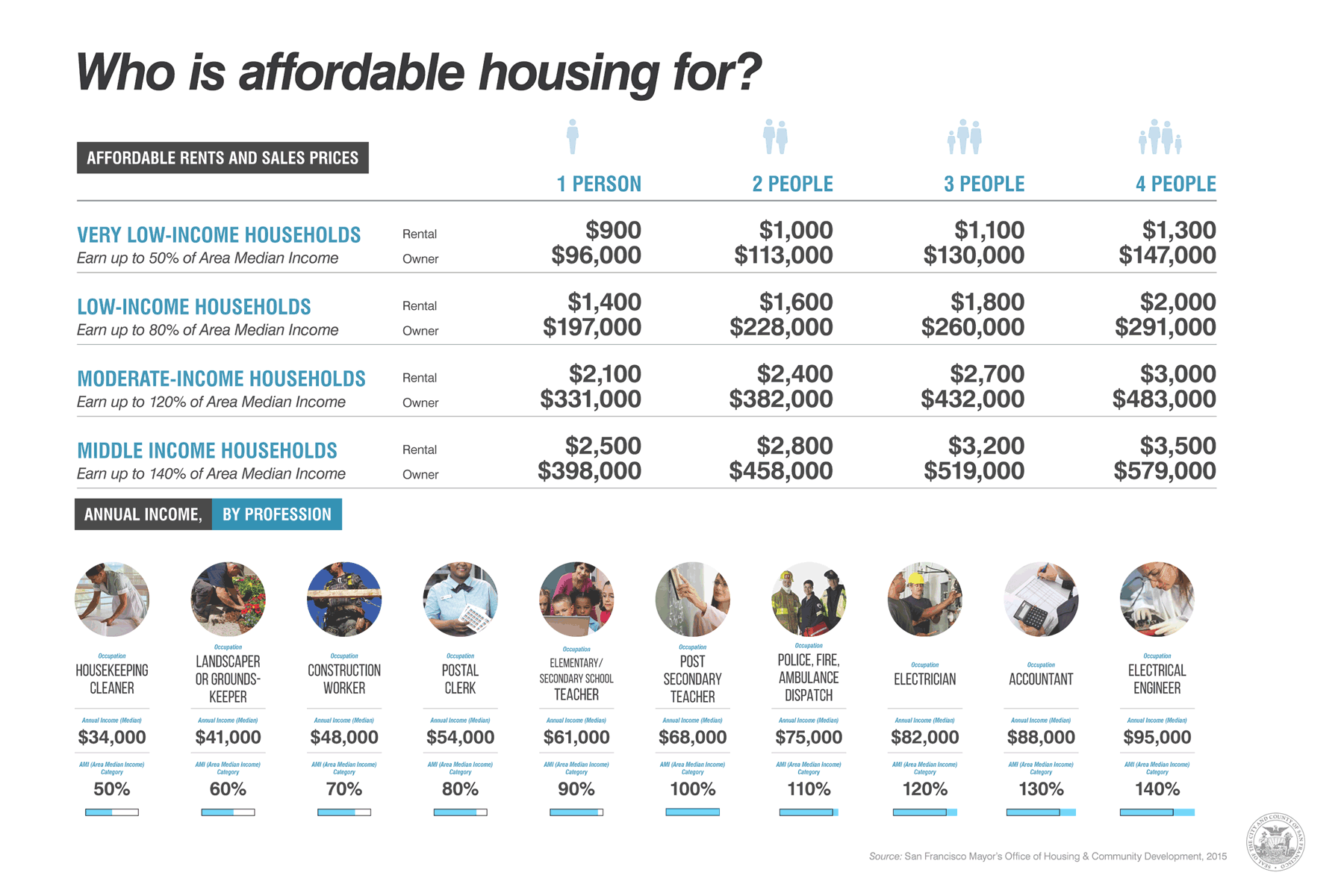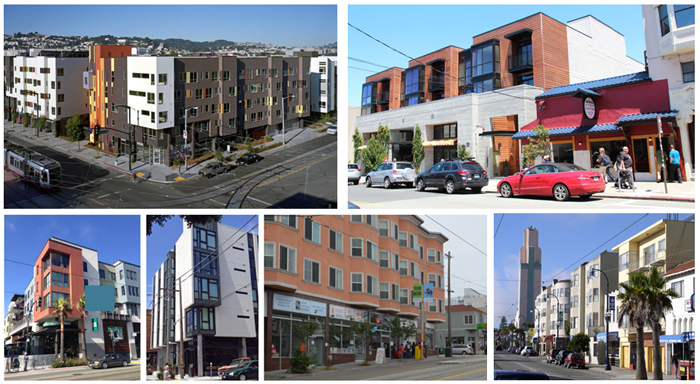Frequently Asked Questions
Who will qualify to live in the affordable housing produced by this program?
HOME-SF will create homes for very low, low, moderate, and middle-income households. The chart above illustrates how these terms are defined and what professions tend to fall into each category.
Area = A particular geographical area, e.g., San Francisco
Median = Middle point: half of the households earn below the median while the other half earn above
Income = Total income of the entire household
- Very-low income households: Earn up to 55 percent of the Area Median Income in San Francisco
- Low-income households: Earn up to 80 percent of the Area Median Income in San Francisco
- Moderate-income households: Earn up to 120 percent of the Area Median Income in San Francisco
- Middle-income households: Earn up to 140 percent of the Area Median Income in San Francisco
Half of the households in San Francisco earn below the AMI while the other half of households earn above the City's AMI. AMI is set each year by HUD and is based on household size and the income households earn in the area. The City uses these annually published income limits to inform its various housing programs.
The total of all salaries earned by all people living in the same home equals the household's total annual income. Based on the 2010 American Community Survey (also known as the U.S. Census), the typical San Francisco household has approximately 2.4 people.
See the Mayor's Office of Housing and Community Development for more information about who qualifies for affordable housing.
Click on image to enlarge.
What will HOME-SF developments look like?
In keeping with the character of the neighborhood areas and commercial corridors, HOME-SF residential developments will be required to place a strong emphasis on ground floor retail (also known as mixed-use buildings). In addition, the HOME-SF team will develop specific design guidelines that require proposed projects to include elements such as:
- Commercial spaces with active ground floor uses
- Transparent and operable windows, awnings, and informational displays
- Attention to design detail, including variation in material use
Click here for an overview of the existing San Francisco Planning design review process.
The following photos are examples of mixed use-buildings.

What is the design review process for HOME-SF developments?
Staff will complete a design review for all projects that elect to participate in HOME-SF. This review will include the various dimensions of proposed projects, including height, relevant setbacks, and other standard design considerations. Projects will be required to apply design solutions, such as:
- Planting living walls or vines on property line walls
- Window detailing
- Varying the building façade materials and depth from the sidewalk
- Providing an active ground floor
These design elements, among others, will ensure developments blend with adjoining buildings to ensure consistency with neighborhood character.
Will HOME-SF developments need to pay development impact fees?
Yes. The City imposes impact fees on development projects in order to mitigate the impacts caused by new development on public services, infrastructure, and facilities. For example, new residential and commercial projects pay impact fees to offset burdens placed on transit systems and sidewalks. Some impact fees apply to various types of development projects throughout the City, while others apply only in certain neighborhoods.
Learn more about the City's Development Impact Fees.
What other City programs encourage affordable housing?
San Francisco has several other programs designed to create new affordable housing, protect the existing housing supply, and encourage higher levels of affordable housing through development incentives, such as:
Other programs include:
See the Mayor's Office of Housing and Community Development, the Office of Community Investment and Infrastructure, and the San Francisco Housing Authority for more information and a complete listing of all programs.